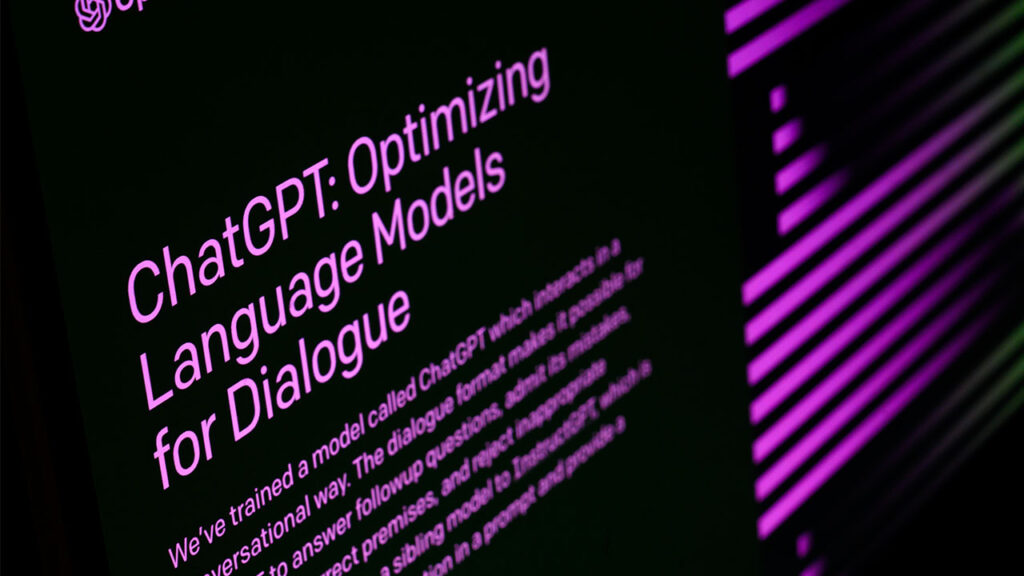Especially in the area of natural language processing, the recent release of ChatGPT-4 represents a significant advancement in artificial intelligence.
Table of Contents
What is meant by GPT?
Generative Pre-trained Transformer is referred to as GPT. It is a neural network machine learning model that can produce any type of text and was developed using data from the internet. Large language models (LLMs) are trained using this powerful neural network to mimic human conversation.
The model keeps track of words in a sequence, enabling it to understand the language’s context and meaning. The GPT model simply produces text, which enables it to apply artificial intelligence to assess the user’s request and produce text efficiently.
With its conversational capabilities, contextual data, and more, it has completely revolutionized the field of artificial intelligence. The model is capable of quickly generating code, summarizing material, and offering insightful information.
Some Brief about GPT-3
An autoregressive language model called GPT-3 learns by anticipating the following token. The model will require an initial prompt text and will be able to continue producing text using that prompt.
The model is assisted in having a conversation with the user through Reinforcement Learning with Human Feedback (RLHF). The usage cases for the 175 trillion parameters GPT-3 language model are as follows:
- Summary of a text
- making content
- creation of codes
- Create cartoons and poetry
- creating an app
Capabilities of ChatGPT-4
Several rumors circulated after Microsoft Germany CTO Andreas Braun revealed that GPT-4 would launch in the third week of March. In AI in Focus: Digital Launch, Dr. Andreas Braun stated:
The multimodal models in GPT-4, which will give a wide range of options, including movies, will be introduced the following week.

What can we, therefore, expect from GPT-4? The newest technology from OpenAI, GPT-4, offers the most sophisticated system and generates responses that are significantly safer and more helpful.
In the GPT-4 Developer Livestream, Greg Brockman, President and Co-Founder of OpenAI, said that the firm has been developing GPT-4 since they founded it, with the last two years being spent perfecting the new technology. To test the model’s capabilities, the full train stack has to be rebuilt.
In order to provide precise, high-performing outputs, ChatGPT-4 uses a variety of input kinds, including image, text, speech, and numerical data, together with a number of intelligence processing methods. Its role as a language model has expanded.
Summarizing the Role of ChatGPT-4
There is a “System” area on the left-hand side of ChatGPT-4 if you haven’t gotten a chance to play around with it yet. You should describe your unique requests and expectations for the assistant in this section. The assistant should follow these instructions to make sure you get what you want.
For instance:
- You are a sizable language model called ChatGPT. Observe the user’s instructions closely.
- You are an assistance for AI programming. Observe the user’s requirements precisely. Provide specifics on each action you took. Write the program in a single code block.
Summarizing Specifics Context
By copying and pasting an article and instructing ChatGPT to “Summarize the text into a sentence where every word begins with “G”,” Greg Brockman demonstrates how to utilize ChatGPT-3.5. Naturally, ChatGPT-3.5 failed the test. The user’s request is successfully produced by GPT-4, though.
But, as the assistant said the word “AI,” Greg Brockman said, “AI doesn’t count! That’s dishonest! The assistant cheerfully replied with a term that stood in for “AI” and began with the letter “G.
By giving the assistant instructions to follow, GPT-4 can produce the user’s desired results precisely.
Combining Ideas
Moreover, GPT-4 allows for the flexible fusion of concepts using various articles. You can query the ChatGPT-4 assistance by copying and pasting your articles and asking queries like: Identify a theme that connects these two articles.
The ChatGPT-4 assistant’s output can be improved if you give it feedback if it wasn’t exactly what you were looking for or insightful enough.
Generating / Building with GPT-4
GPT-4 can be used to construct things as well! For the assistant to provide you with exactly what you need, you will need to give it a prompt and a little bit of detail. Write me a Discord bot, for instance.
If you wanted the assistant to construct something code-generated, for instance, they would be allocated as an AI programming assistance based on the role you gave ChatGPT-4 in the systems section. This will enable the assistant to successfully output your request together with the prompt.
Arithmetical Calculations
It can be difficult to address problems involving high-level computations and sophisticated calculations, such as taxes. Now, you can use ChatGPT-4 to assist you with these calculations. For instance, if you need the ChatGPT-4 system to calculate a tax problem, you must designate it as a TaxGPT so that it is aware of its responsibilities.
The assistance will be able to make mathematical calculations when you give some background information about your issue. The model is not connected to a calculator, which is an interesting fact.
Graphics
The image function is currently not accessible to the general public, but it is being developed! You can input an image and inquire about it with the assistance. It does take a while to output at the moment, however, OpenAI is improving the model to make it faster.
Handwriting
A bit of handwritten writing can be captured, and ChatGPT can read the handwriting and translate it into text. Some people are even making jokes about how it can recognize doctors’ handwriting, which we have all had difficulty reading in the past and in the present.
Wrapping up
There have been numerous improvements and adjustments made to ChatGPT-4 since the release of ChatGPT-3.5. It’s interesting to see what ideas folks have for ChatGPT-4. If you’ve already had a chance to experiment with it, share your findings with us in the comments.

